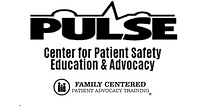Advance Directives
Karen Ann Quinlan
Karen Ann Quinlan, a twenty-two-year-old who ingested a harmful mix of drugs and alcohol, suffered two fifteen-minute periods of interrupted breathing which left her in a chronic vegetative state without any cognitive functions.
Terri Schiavo
Throughout the late 1990s and early 2000s, the Death With Dignity National Center kept an office in Washington, D.C. For years, Republican lawmakers tried to pass legislation nullifying Oregon’s 1997 Death With Dignity Act, which allowed terminally ill patients to obtain life-ending medication. The legislation never made it out of the Senate, but it eventually passed in the Republican-controlled House, and the aid-in-dying organization felt compelled to keep pressure on Congress to stop the bill. Then came Terri Schiavo.
What are Advance Directives / Advance Care Planning?
National Institute on Aging
Advance care planning is not just about old age. At any age, a medical crisis could leave you too ill to make your own healthcare decisions.
Many Avoid End-Of-Life Care Planning, Study Finds
Over One Third of U.S. Adults Have Advanced Medical Directives
(Reuters Health) - Nearly 37 percent of Americans have advanced directives for end-of-life care if they become seriously ill or unable to make health care decisions, according to a new analysis of recent research.
Individuals’ Right under HIPAA to Access their Health Information
Pulse Center for Patient Safety Education and Advocacy (CPSEA) is dedicated to raising awareness about patient safety through education, advocacy, and support.
We envision a world in which the patient's voice is heard and no one is harmed by healthcare.




